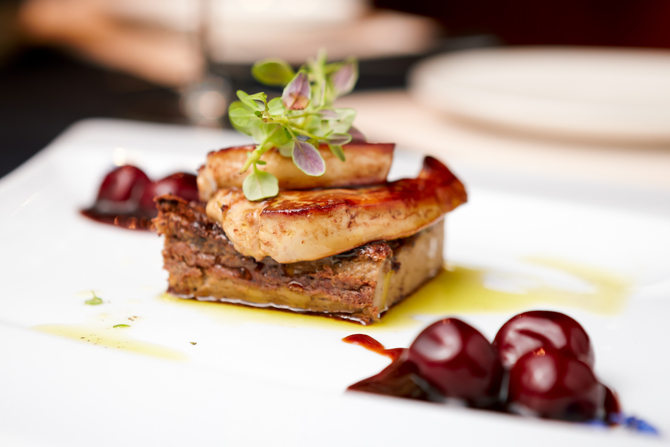
With local gastronomy being an essential part of travel, veteran wine and dine columnist Benny Li digs deep into his pocket of tips to ensure you make the best of your food travel abroad.
A Taste of Local Culture on the Palate
A Shanghai native who later relocated to Hong Kong as a journalist and news assignment editor, Benny has been able to travel around the world when he was commissioned to pen a food and travel column, which has later contributed to his reputation in this genre of writing. The recently popular food travel, as it turns out, is precisely the combination of these two things that Benny specialises in. According to the World Food Travel Association, food tourism is really a type of cultural tourism, as the ultimate goal of food travel is the pursuit of unique, memorable local dining experience, which is often a reflection of the local culture. And food travel is by no means limited only to gourmet experience, as the Association's research has revealed that only 8.1% of all foodies identify with the 'gourmet' label (see note 1).
Such a finding is immediately agreed by Benny, host of food travel show China a la Li, and a food travel guide with 12 years of experience under his belt. "Great food doesn't have to be just gourmet. Anything from appetiser to main dish is worth a try, so long as it is authentically made with quintessential local flavours," said Benny, who added that the essence of food travel lies in the exploration of local culture and custom through observing the use of food ingredients, ways of cooking and dish presentation. "At a banquet I held in Beijing, where the Peking Duck is widely known as a popular dish, I was however impressed by the sea cucumber guts with fresh Sichuan pepper – with the sea cucumber guts placed inside a thin ice dome like the way Japanese sashimi is presented, breaking the ice dome became part of the fun, while the spiciness of the pepper complemented the sweetness of the sea cucumber guts perfectly. From presentation to taste, the dish was an embodiment of the locals' innovative mentality and the chef's adventurous gastronomy."
As a Shanghaiese, Benny is naturally clued up on his home city's cuisine. "While most Hong Kongers are familiar with the flavoursome dark soy sauce and liberal use of sugar characteristic of Shanghai cuisine, true Benbang cuisine ('local cuisine', a hybrid of neighbouring Jiangsu and Zhejing cuisines) puts premium on details, no matter the price. Take the escargot shell stuffed with minced pork and chopped escargot meat, a dish I tried when dining with some old school chums in Shanghai for instance. It's an old recipe that is passed down to just a few, and a memorable dish at that." What makes the dish memorable is the meticulous effort made in picking the escargot meat out, which is then minced together with pork and stuffed back into the shell, before the stuffed shells are simmered in a sauce infused with a specially made wine to create a dish where the sweetness of the escargots, fragrance of the pork and freshness of the soup are combined to tantalise the palate. "There is also this popular winter dish in Shanghai, made with the sweet and glutinous centre of a vegetable whose outer layers are damaged by the frost at night. Stir-fried with mushroom and wheat gluten, the dish has such a sweetness that can even tempt the carnivorous palate of meat lovers." Dishes like these are the continuous reminders of the fascinating Jiangnan culinary culture, which has the power of turning ordinary food ingredients into delectable delicacies, in spite of the rapid development of Shanghai.
With his daughter studying in the United Kingdom, Benny is likewise an expert in the British food culture. "The British food culture has long had its bad reputation, but insiders who don't just spend time on shopping or sightseeing know their way to restaurants that are worth a visit," said Benny, who recalled a dining experience with his daughter at a restaurant, where its duck and waffle, and foie gras with chocolate sauce easily conquered his heart. "Older people may hesitate to try these dishes upon hearing their names, but the essence of food culture is about being adventurous. The duck leg was fried to perfection the French way, served with honey and a runny sunny-side-up on top, which dazzled with the harmonious medley of sweet and savoury. The foie gras with chocolate sauce was a dish where a sautéed foie gras was served with a soft-boiled quail egg on top, alongside a rich, velvety chocolate sauce. The richness was beyond imagination. It takes a truly innovative chef to devise such unconventional food combinations, and what it means is that the new generation of British chefs have transcended the conservative and restrained way of cooking that harks back to the older times."
Be Open-minded for Culinary Adventures
Believing that food travel is an eye-opening journey, Benny advises senior citizens to research their travel itinerary online or from guidebooks instead of signing up for guided tours, because only by designing your own itinerary and visiting local restaurants can you tap into the untainted, authentic local culture through the anticipation and exploration of one-of-a-kind cuisine.
Special Thanks:
Benny Li, wine and dine columnist
Note 1: www.worldfoodtravel.org/what-is-food-tourism